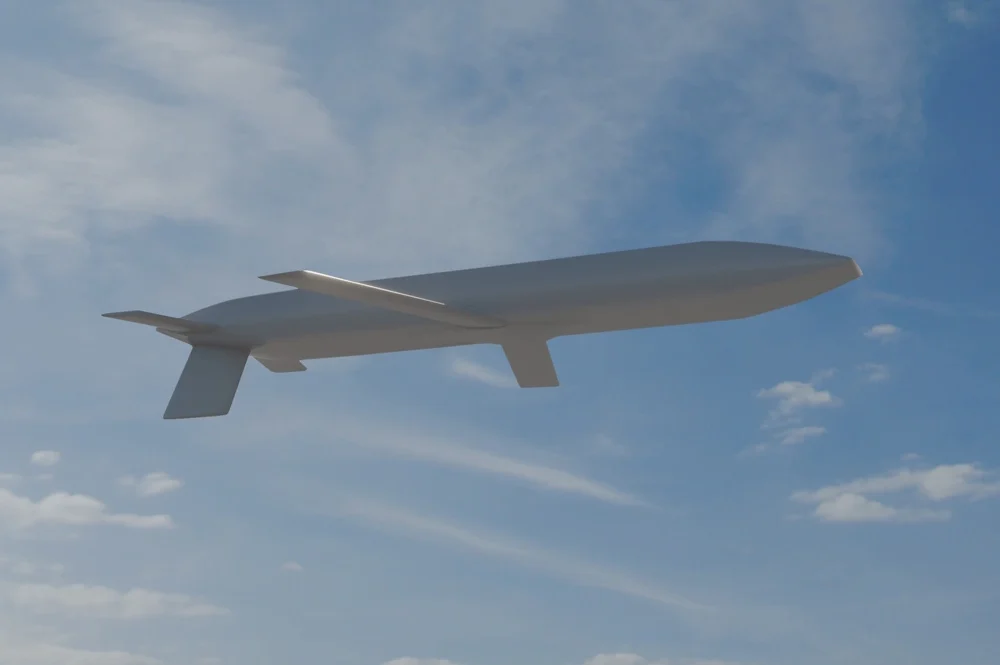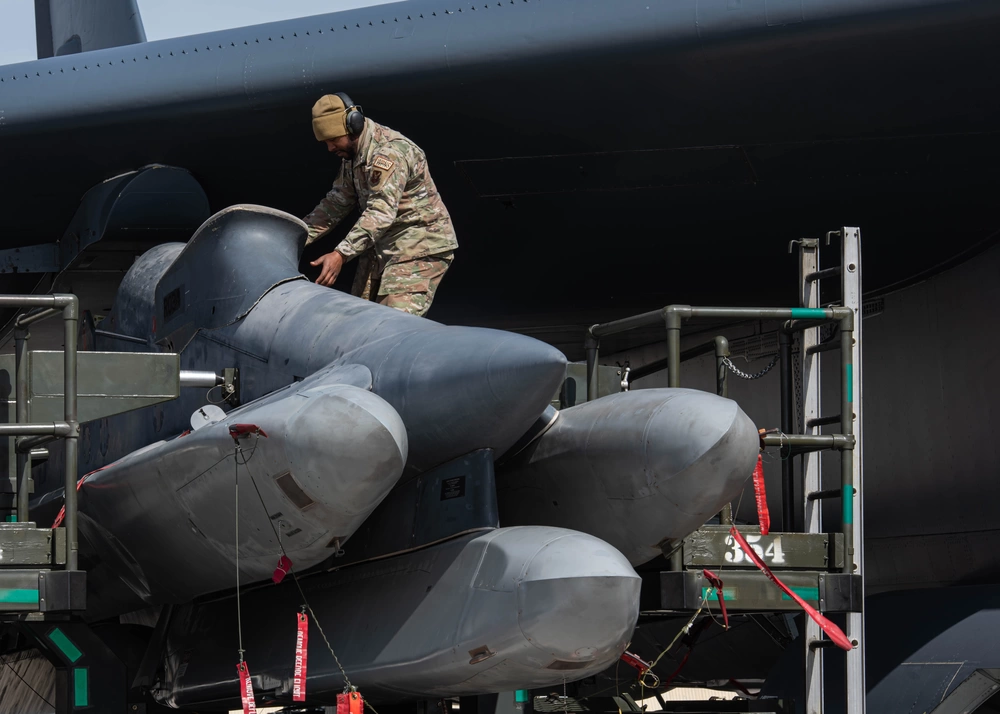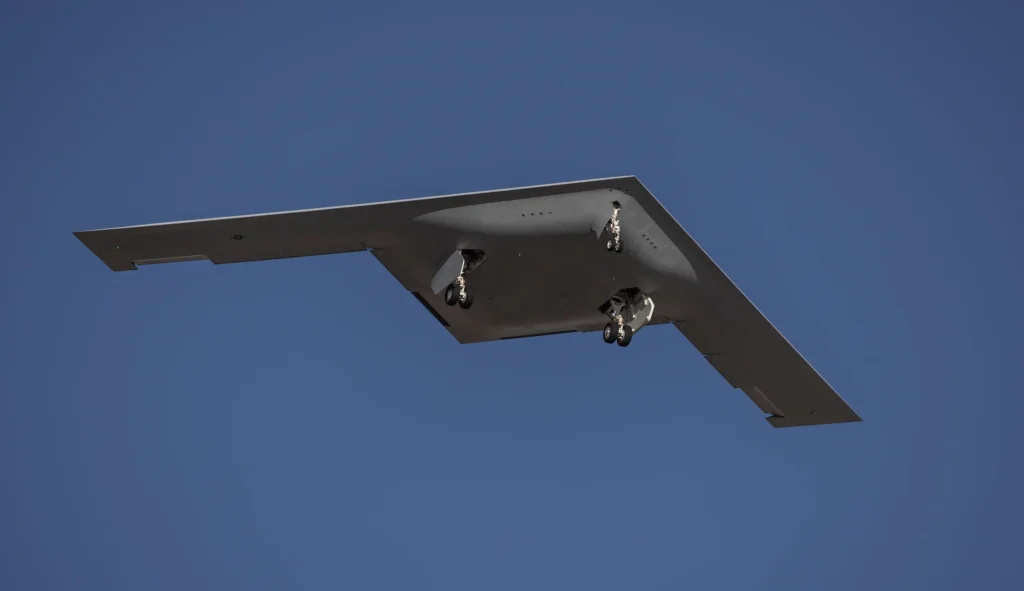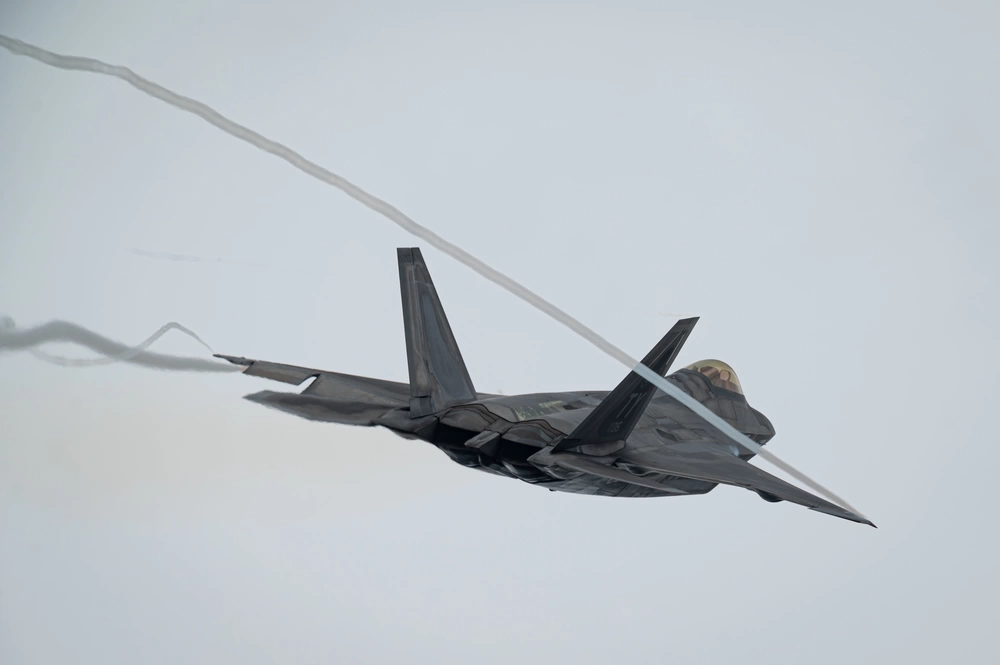Air Force gives us a glimpse of its new AGM-181 LRSO nuclear missile
- By Alex Hollings
Share This Article

Thanks to an Air Force render, we just got our first glimpse of America’s new stealthy air-launched nuclear missile, the AGM-181 Long Range Stand-Off Weapon, or LRSO.
The AGM-181 LRSO has been quietly in development since 2017, and in 2023, we learned that the U.S. Air Force had secretly test-launched the weapon at least five times between 2020 and 2022. Those tests seemingly went so well that the weapon is said to already be ready for service. However, it is waiting on its new W80-4 dial-a-yield nuclear warhead that will allow it to strike targets with a relatively small five-kiloton blast (about one-third the power of the bomb dropped on Hiroshima), or a much larger 150-kiloton blast.
The LRSO is meant to replace America’s long-serving AGM-86B nuclear-armed air-launch cruise missiles, which entered service in 1982 and provide non-stealth bombers like the B-52 Stratofortress the ability to conduct nuclear strikes deep inside enemy territory without coming within range of adversary air defenses. The AGM-86 has an unclassified range of more than 1,500 miles, and carries a similar, but more dated, W80 dial-a-yield warhead.
The AGM-86, like the LRSO when it enters service, represent the stand-off portion of the airborne leg of America’s nuclear triad, alongside B61- and B83-series nuclear gravity bombs that can be dropped from stealth aircraft like the F-35 and B-2 Spirit. The other two legs of the triad include land-based weapons, namely America’s Minuteman III ICBMs, and sea-based systems like the Trident II SLBMs carried by America’s Ohio-class nuclear ballistic missile submarines.
While dated, the AGM-86 is a pretty stealthy cruise missile, reportedly drawing some of its design elements directly from Boeing’s defunct Model 853-21 Quiet Bird stealth aircraft program from decades earlier.
A single B-52 can launch as many as 20 of these nuclear missiles, with six mounted on two external pylons and another eight deployed from a rotary launcher inside its weapons bay.

And while details regarding the capabilities of the new AGM-181 LRSO remain classified, there are some things we can assess with a fair bit of certainty based on the nature of the program and this newly released render.
First and foremost, this weapon is all but certainly stealthier than its predecessor, with a distinctly angular fuselage and not a single 90-degree angle to be found on its airframe. Assuming this new weapon has a broadly similar size to the AGM-86, at almost 21 feet long and about 24 and a half inches in diameter, that means we’re talking about an extremely small target on radar screens. This will be especially true if the weapon is also adorned in modern radar-absorbent materials, which are said to be capable of absorbing upwards of 80% of inbound electromagnetic energy, or radar waves.
Like the AGM-86, it’s generally expected that this new weapon will be subsonic, which might surprise some. Yet, stealthy, subsonic cruise missiles are much harder to detect than hypersonic glide vehicles. These weapons can fly at low altitudes, hiding behind the curvature of the earth and then the terrain itself to avoid interception as they close with their targets.
Subsonic performance also allows for more efficient propulsion that will translate to significantly greater range than a supersonic or hypersonic weapon of the same scale. It also allows it to produce far less heat, which mitigates its infrared signature making it harder for infrared-guided weapons to chase it.
Interestingly, this new render does not show an air intake that we’d expect to see on a cruise missile. Unlike ballistic missiles, which are powered by conventional rocket motors that carry their own oxidizer onboard, cruise missiles are powered by air-breathing jet engines. The AGM-86, for instance, carries an F107-WR-101 turbofan that produces about 600 pounds of thrust, which is enough to propel the weapon to around .73 Mach, or right around 560 miles per hour.
Related: These are the US aircraft qualified to carry nuclear weapons
The LRSO is expected to fly under turbofan power as well, though the exact kind isn’t clear yet. Some sources report it will carry a new engine, the F107-WI-106, which is a derivative of both the older 101 found in the AGM-86 and the much newer F107-WR-105 that already powers America’s longer-ranged iterations of the stealthy JASSM line of cruise missiles.
It’s possible that this render just omits the air intake for security reasons, or the intake is on the top of the weapon, and just not visible from the available viewing angle. And it’s always possible that this new render is a bit of smoke and mirrors, and the missile itself may look quite different.
The U.S. intends to purchase some 1,020 AGM-181 LRSOs, ringing it at around $14 million a piece, for a total acquisition cost of around $16 billion. There had previously been discussion of fielding a conventionally-armed variant of this weapon as well, but at least for now, that plan seems to have been shelved.
However, this purchase will represent a modernization not an expansion of America’s nuclear arsenal. This is because the new W80-4 nuclear warheads are not new warheads at all, but rather lifetime extension programs that refit and mordernize existing warheads that are aging out of service. The U.S. is effectively taking old nukes that are no longer safe to store or employ and rebuilding them with modern safety standards and systems.
Likewise, these new stealthy missiles will replace aging AGM-86s that have been collecting dust for decades. Missiles – like most complex machines – come with expiration dates, and after more than 40 years, the AGM-86s are getting too old to maintain safely.
Delivery for the W80-4 nuclear warheads meant to equip the AGM-181 LRSO is slated to begin in 2027. Based on unclassified reports on the weapon’s testing performance, the LRSO is likely to enter active service very shortly thereafter.
Feature Image: An artist’s rendering of the Long Range Standoff Weapon. (U.S. Air Force illustration)
Read more from Sandboxx News
- The five best bayonets still in use around the world
- Legendary US Army Ranger William ‘Doc’ Donovan achieves very rare special operations honor
- Airborne adventures with a Green Beret Combat Dive Team
- Martha Gellhorn: The only woman present on D-Day
- The special operations that paved the way for D-Day
Related Posts
Sandboxx News Merch
-

‘Sandboxx News’ Dad Hat
$27.00 Select options This product has multiple variants. The options may be chosen on the product page -

‘AirPower’ Golf Rope Hat
$31.00 Select options This product has multiple variants. The options may be chosen on the product page -

A-10 ‘Thunderbolt Power’ Poster
$22.00 – $28.00Price range: $22.00 through $28.00 Select options This product has multiple variants. The options may be chosen on the product page

Alex Hollings
Alex Hollings is a writer, dad, and Marine veteran.
Related to: Airpower

How much does it cost to train an Air Force pilot? A LOT

America now has a second B-21 Raider stealth bomber in the sky

Lockheed wants to give the F-35 a ‘Ferrari upgrade’ to bring in on par with upcoming 6th-gen fighters

F-22 achieves record-breaking shot with Raytheon’s newest AIM-120 missile
Sandboxx News
-

‘Sandboxx News’ Trucker Cap
$27.00 Select options This product has multiple variants. The options may be chosen on the product page -

‘AirPower’ Classic Hoodie
$46.00 – $48.00Price range: $46.00 through $48.00 Select options This product has multiple variants. The options may be chosen on the product page -

‘AirPower’ Golf Rope Hat
$31.00 Select options This product has multiple variants. The options may be chosen on the product page -

‘Sandboxx News’ Dad Hat
$27.00 Select options This product has multiple variants. The options may be chosen on the product page
